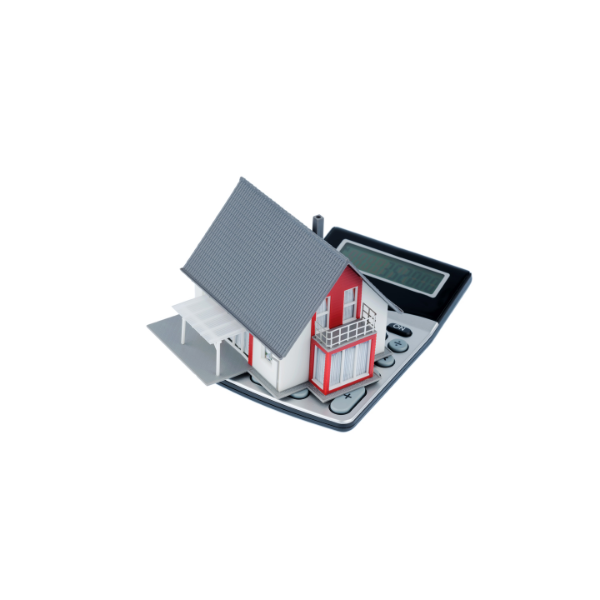The first step to owning your own home is to buy a suitable plot of land. The development plan, B-plan for short, contains all the essential information about how a plot of land can be developed and how an area that is to be kept free from development can be used. What does the development plan look like, what does it say, how can you influence it and what happens if you don’t comply with the development plan? We give you the answers to these questions here.
the essentials in brief
The development plan is an official and public document that contains all the important information about how a plot of land can be built on and used.While the development plan is being drawn up, citizens have the opportunity to have a say – but subsequent changes are very difficult.
If the specifications of a legally valid development plan are not complied with, private builders must expect sanctions.
What is the development plan? And what is the §34?
You can read about what is important when choosing a plot of land in our article on “The perfect plot of land” . Once this has been done and the decision has been made, you can now happily call yourself a landowner. However, you cannot do whatever you want with your private property. The permissible development of land follows clear guidelines that both large construction companies and private builders have to adhere to.
The development plan is based on the legislator’s idea that development in a densely populated area should always be based on a planned concept. It is enacted as a statute of the municipality – with the exception of Berlin, where it is a statutory ordinance – and determines which uses are permitted in the municipal area. The regulations in the development plan are derived from the representations in the land use plan and specify the urban planning activity of the municipality.
Unlike the land use plan, the development plan is usually only drawn up for part of the municipal area. This can be, for example, the inner city area, residential areas to be developed on the outskirts or areas of exceptional urban political importance. However, in areas with old settlements or historical town centers there may also be properties for which no development plan exists. Even for individual vacant lots, a development plan is not always drawn up. Does this mean that you are not bound by any rules when building on these plots of land? Unfortunately not. In such a case, §34 of the Building Code stipulates that one has to orientate oneself to the neighboring buildings in order to prevent the new building from being completely out of the ordinary.
Land use planning
Section 1 of the Building Code Section 1 of the Building Code defines the task, term and principles of land use planning (land use planning and development planning), namely “ preparing and managing the structural and other use of the land in the municipality (…) ”.
The spatial planning system in the Federal Republic of Germany consists of various planning instruments used by public administration. The lowest level of spatial planning is the municipal level. This is known as land use planning and includes the two formal instruments of urban planning: the land use plan and the development plan.
What is in the development plan?
Within the area for which a development plan has been drawn up, this determines whether a residential building, an office building or a commercial area may or should be built on a property. The locations of social infrastructure facilities and traffic areas are also specified in the development plan. However, a development plan also regulates that certain plots of land are to be kept free of any development in order to build green areas, playgrounds or the like. In addition to the use of the property, a look at the development plan provides information about how high the building to be erected may be, how large the built-up area may be and where the house should be located on the property. The entire possible content of a development plan is determined in Section 9 of the Building Code (BauGB).

Our free prefabricated house calculator shows you the expected costs of your construction project.
What does the development plan look like?
The B plan usually consists of a plan drawing (Part A), which contains the various stipulations in the form of drawings. This is accompanied by a textual explanation (Part B) added. In addition, every development plan includes a justification in which the urban development goals and specifications of the plan are explained. A special part of the justification is the environmental report, in which the expected significant environmental impacts are described and evaluated. The development plan and its justification can be viewed by anyone after it has been determined. This requires a visit to the city planning office or the local building authority. In some municipalities, interested builders can now also view the corresponding development plan online.
What influence can you have on the development plan?
A development plan that has already been decided cannot simply be changed, but the citizens have the opportunity to have a say during the preparation process. As part of the early public participation, citizens are informed about the goals and purposes as well as possible alternative plans and the likely effects of the plan. For this purpose, the plans are publicly displayed and discussed, for example, as part of a citizens’ meeting. In the second stage of citizen participation, the draft plan agreed within the administration, including the justification, is publicly displayed. Suggestions and requests for changes to the plans can be submitted by the community citizens within one month.
How relevant is the development plan for you and your building project?
The B-Plan determines the binding framework conditions, limits and requirements in relation to the property. It contains important information about where a building can be, how big it can be and what it should look like. The development plan is legally valid and therefore binding for private builders. In principle, a building project can be approved if it does not contradict the stipulations of the development plan.
Basics of planning:
A prerequisite for affecting the main features of planning through deviations from the development plan is that these main features are also clearly recognizable. For example, no permit would be granted for the erection of a house with a gabled roof in a purely flat-roofed settlement.
But even the legal development plan, which at first glance appears very restrictive, has a certain degree of flexibility. A relaxation of the regulations, however, is linked to two central conditions: In any case, the basic planning must not be affected (see info box) and the deviation must be compatible with the interests of the neighbors and public interests (see info box). The interpretation of these conditions is of course a matter of opinion and is therefore decided in each individual case.
Development plan deviation:
A development plan deviation that affects the neighbors would be, for example, exceeding the maximum building height or too small a distance to the property line, which would lead to shading of the neighboring building site.
What happens if the development plan is not complied with?
But what happens if your construction plans contradict the specifications? In such a case, you have to reckon with both a fine and a construction freeze, but in the worst case even deconstruction.
What is the point of a building permit?
With a formal preliminary building request, builders can check whether the specifications of the development plan contradict the ideas of their building project. Such an inquiry is also known as a ” small approval procedure ” and is possible and recommended even before the property is purchased. Documents that are as detailed as possible, such as a building specification, plans or calculations, must be submitted for this purpose. However, this examination of the approvability of a construction project is not free of charge. However, the magnitude of the fees incurred is around one-thousandth of the total construction costs and is therefore worthwhile in any case. Even less complex is an informal preliminary building enquiry, which is possible from as little as €15. In contrast to the formal preliminary inquiry, however, this is not legally binding. With a positive answer to your preliminary inquiry, can you start building straight away? No, unfortunately not. The preliminary building application is not yet an approval procedure and the preliminary building decision from the authority does not yet authorize the start of construction.
A small tip at the end: Pay attention not only to the development plan of your property, but also to those of the neighboring building sites, provided that these are not yet developed. In this way, you can quickly determine whether you will live in a purely residential area or in a mixed-use area with commercial uses in the future – and what you can expect when you look out of the window.



